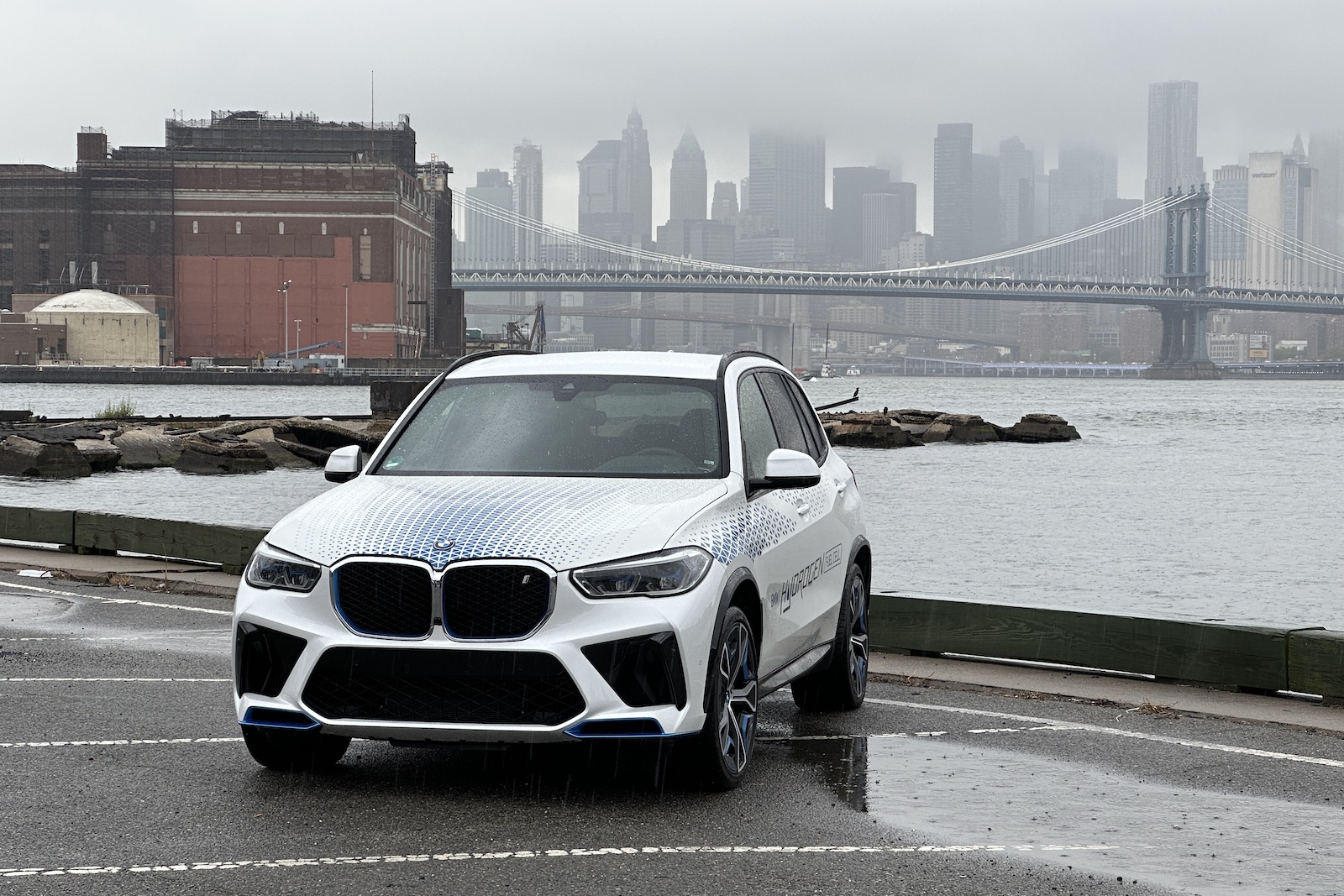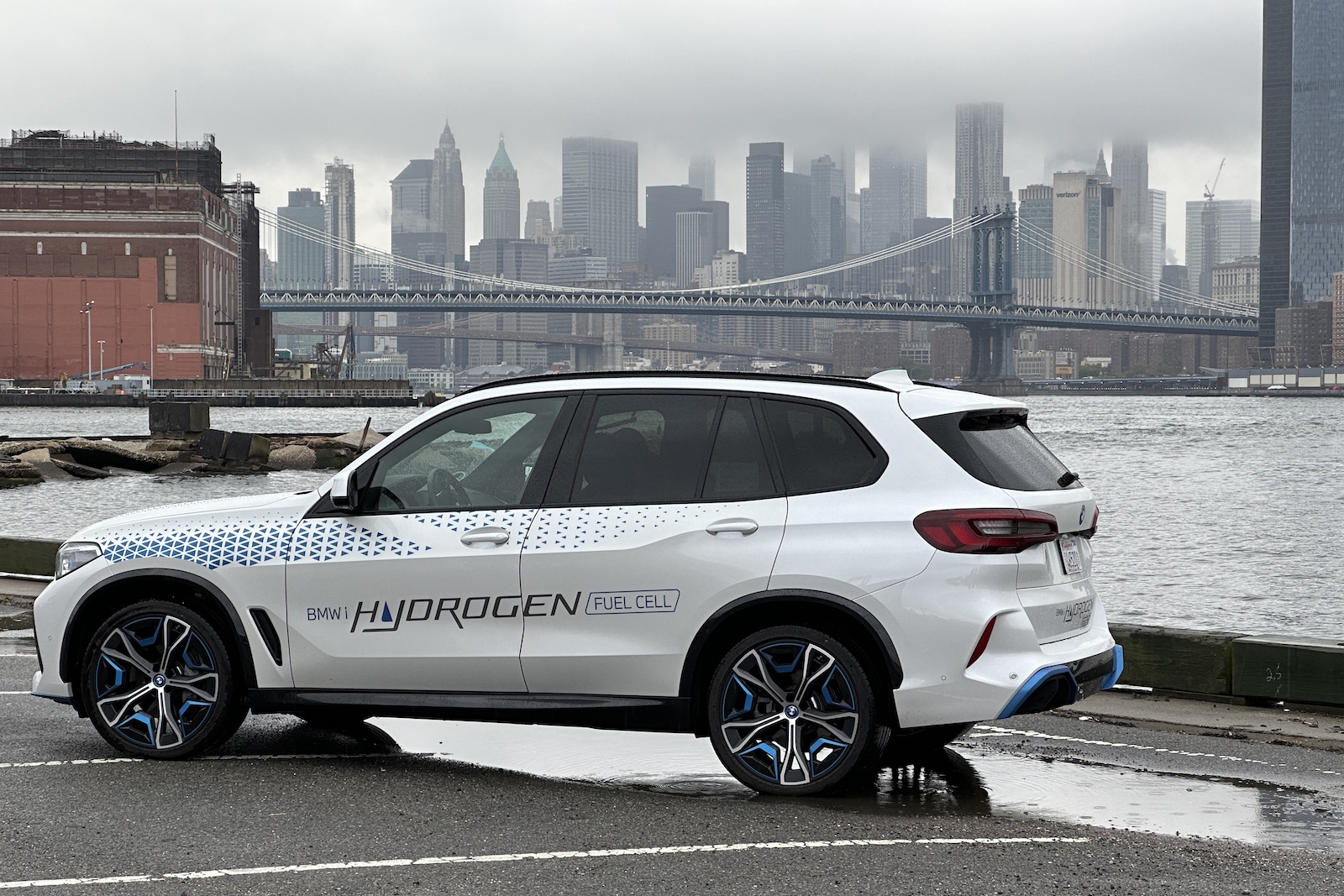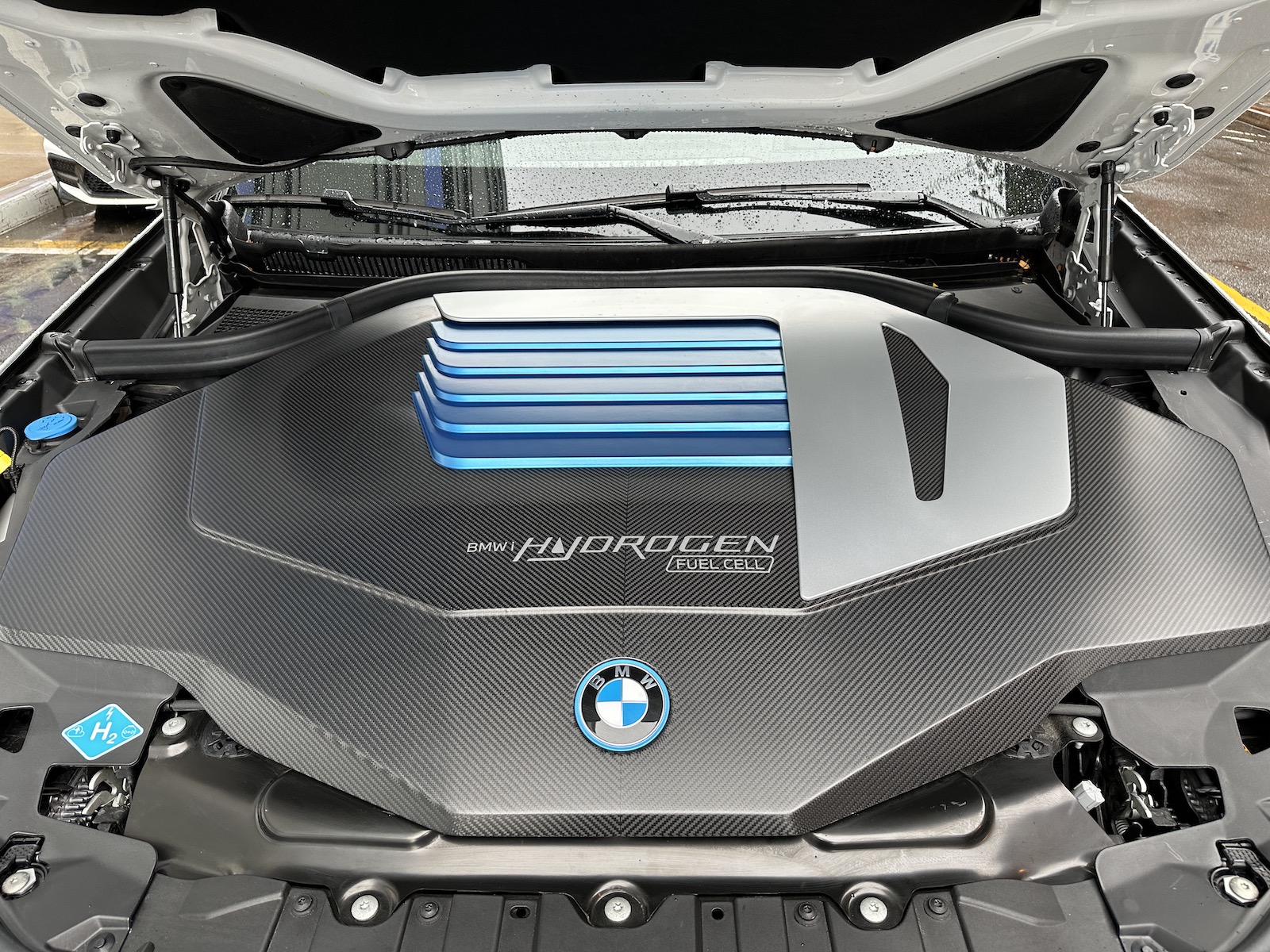“Hydrogen is the fuel of the future. And it always will be.” So goes the snarky criticism skeptics often lay out whenever the subject turns to fuel-cell vehicles.
But there remain plenty of proponents who believe hydrogen fuel-cell technology can be a viable alternative to both gas- and battery-powered vehicles right now. And that includes BMW which joins the handful of other manufacturers — including Honda, Hyundai and Toyota — bringing hydrogen vehicles to market.
Headlight.News got a chance to check out a prototype of the new BMW iX5 Hydrogen during a visit to the Climate Week conference in New York earlier this month. Here’s what we experienced.

Headlight.News got a chance to check out a prototype of the new BMW iX5 Hydrogen during a visit to the Climate Week conference in New York.
How it “stacks” up
Unlike some competitors, the Bavarian automaker sees a zero-emissions future that relies on a variety of different clean drivetrain technologies. These include hybrids, plug-in hybrids, EV and fuel-cell vehicles, or FCVs. You’d have a hard time telling the iX5 Hydrogen apart from any other version of the popular BMW SUV if it weren’t for the distinctive badging and decals on its exterior — or by lifting the hood.
There, a fancy new “engine” cover hides the distinctive drivetrain technology that makes the iX5 run. Like other FCVs, the SUV derives power from a fuel-cell “stack.” (It’s actually a system developed by Toyota, BMW partnering with the Japanese giant on this and several other ventures.)
At its most basic, hydrogen is drawn from two cylindrical carbon-fiber tanks capable of storing about 6 kilograms, or 13 pounds, of the lightweight gas. The tanks are stowed inside the center hump used in a petrol-powered X5 for its driveshaft. The hydrogen is forced through a stack of thin, permeable membranes coated with a mix of platinum and other rare metals. They act as a catalyst, forcing the hydrogen to combine with oxygen from the atmosphere to form water vapor.

The Bavarian automaker sees a zero-emissions future that relies on a variety of different clean drivetrain technologies.
Refillable batteries
In the process, electrons are stripped away and can be used to power the iX5’s electric motor.
Essentially, you might think of a fuel-cell system as a refillable battery. And that’s the potential plus that proponents are quick to highlight. Since the stack’s only byproduct is water vapor, it’s essentially just as clean as an EV. But FCVs can deliver better range — in the case of the iX5 about 310 miles per twin tank using the global WLTP test standard. And that range doesn’t degrade as significantly in winter as an EV’s does, BMW claims.
Better yet, you can refill the tanks in about three to four minutes. To motorists who dread lengthy EV charging times, this can be a huge advantage.
That is, of course, if you can find a place to buy your hydrogen. Right now, there are barely 100 publicly accessible refueling stations in the entire U.S. And most of them are located in California, which is why BMW, like Toyota, Honda and Hyundai, will largely limit sales to that part of the country for now.
But there’s a push to expand availability, in part due to the growing interest in using hydrogen for long-distance trucking, taking advantage of the greater range and fast refueling times.
A hydrogen hybrid
Like other fuel-cell vehicles, the iX5 Hydrogen is actually a hybrid. It pairs its stack with a 400-volt, 2.0-kilowatt-hour lithium-ion battery pack. That’s only slightly larger than the pack in the 2023 Toyota Prius. But it’s big enough to store excess energy produced by iX5’s fuel-cell system, while also recapturing energy normally lost during braking and coasting, just like a more conventional hybrid.
Energy from the stack or battery pack can be used to power the SUV’s electric motor. Or it can draw electrons from both when a driver slams the throttle to the floor. According to the automaker, the single, rear-mounted, current-excited synchronous motor can produce up to 401 horsepower.
Plenty of power
Officially, BMW claims the iX5 Hydrogen can launch from 0 to 60 in “under 6 seconds.” Top speed is rated at 115 mph.
I didn’t have the chance to run a stopwatch on it, but there is no question that the iX5 is reasonably quick, with more than enough power to launch onto a freeway and make high-speed passes without worry.

Officially, BMW claims the iX5 Hydrogen can launch from 0 to 60 in “under 6 seconds.” Top speed is rated at 115 mph.
Under less aggressive driving, meanwhile, the iX5 delivers a driving experience similar to the xDrive 40i. It is smooth, confidence-inspiring and wholly familiar. The 22-inch Pirelli P-Zero tires offer good grip — something I hope to test out more fully in the near future. The ride is further enhanced by an air suspension and adaptive dampers.
One advantage here is that, like a more familiar EV, the hydrogen-hybrid drivetrain is virtually silent.
When will it be available?
Unfortunately, BMW only plans to roll out about 100 iX5 Hydrogen SUVs this year, with slightly more to follow in 2024. And those will be divided up between the U.S., Europe and possibly other markets.
The automaker has yet to announce how the public might line up to get one of the fuel-cell vehicles. Nor has it released pricing.
The reality is that this is, for now, a test program. It’s hoping to learn more about hydrogen drivetrain technology before locking down plans to offer a more mainstream, high-volume vehicle. If that happens — and BMW hopes it will — we could see a dedicated vehicle that incorporates design elements meant to complement the technology, starting with the use of lighter-weight materials that would extend the vehicle’s range and further improve performance.
The Bavarian automaker insists it takes hydrogen power seriously. And that means the successor to the iX5 could appear in BMW showrooms sometime after mid-decade.



0 Comments